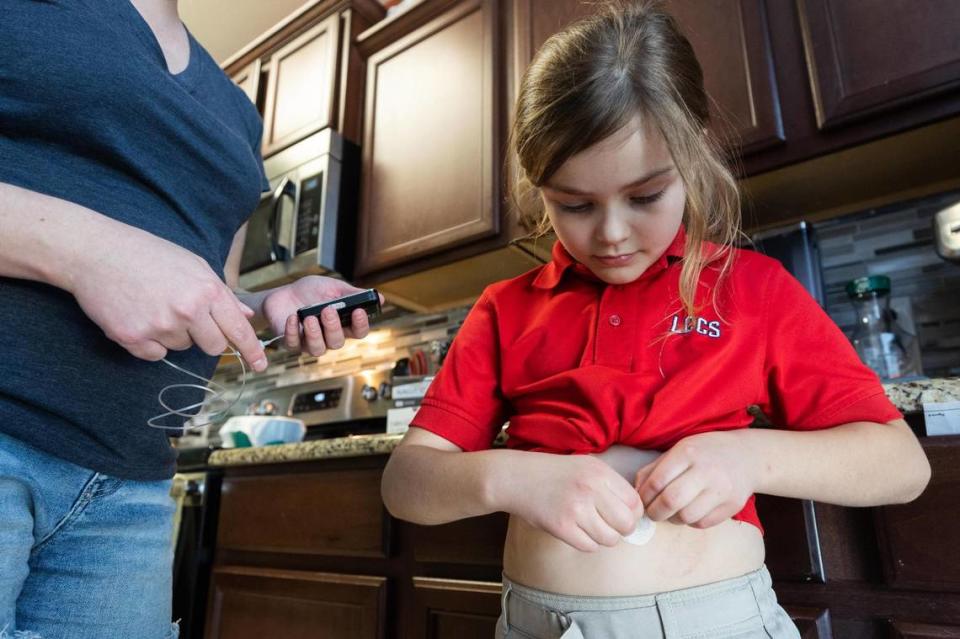Why are more kids in Fort Worth being diagnosed with diabetes? Doctors are flummoxed

The number of Texas kids with diabetes has been steadily increasing for the past two decades.
But by exactly how much, in what parts of the state, and among which children the increase is concentrated is less clear.
Unlike adult diabetes diagnoses, new cases of diabetes among children are not tracked by any state or federal agency. Instead, estimates of the increase are determined via hospital data, local reports, and academic research.
Nationwide, the increase is unambiguous: The most comprehensive recent study found dramatic increases in 3.5 million children over 16 years. Across the study period, the number of children and teenagers living with Type 1 diabetes increased by 45%, according to the research. The number of kids between the ages of 10 and 19 with Type 2 diabetes increased by 95%.
The research, which was published in September, estimated that the prevalence of Type 1 diabetes in kids increased from 1.48 diagnoses for every 1,000 kids to 1.93 diagnoses for every 1,000 kids. That translates to a 45% increase over 16 years.
Among all ages, Type 2 diabetes is far more common that Type 1. But in young children, Type 1 diabetes is more prevalent.
“Type 1 diabetes is still relatively rare,” said Dr. Priya Bui, a pediatrician and the chair of pediatrics and women’s health at the Texas College of Osteopathic Medicine. “But we’re still going to see it more often. And when we talk about our communities, it means that you’re going to have these diagnoses in your school. And the systems should be ready to support children as they have these new diagnoses.”
The exact cause for the surge is unknown. Type 1 diabetes, which is an autoimmune disorder, is believed to be influenced by a combination of factors, including genetic risks and a child’s environment. But there is also a reported connection between children with a viral illness and their chance of developing diabetes after the infection. Some research has indicated that the COVID-19 pandemic could trigger an increase in diabetes diagnoses. A study published in March found that people infected with the coronavirus were at a greater risk of developing Type 2 diabetes a year after infection compared to people who were not infected. Another study, that looked specifically at children who had recovered from COVID-19, found that those children were at a higher risk of developing Type 1 or Type 2 diabetes after infection. But most pediatricians are still waiting for more research to confirm whether the pandemic will translate to a dramatic increase in Type 1 diagnoses among children who had COVID-19.
“We’re really waiting for more studies to know if there is causation,” Bui said.
It’s also possible, Bui said, that changes in children’s lifestyle during the pandemic could cause an increase in diagnoses of Type 2 diabetes. Type 2 diabetes was previously known as “adult onset diabetes” because it was so rare among children. Type 2 diabetes is more related to a child’s diet and environment. Unlike Type 1 diabetes, Type 2 is preventable.
Neither the Texas Education Agency nor the Department of State Health Services tracks pediatric diabetes diagnoses, according to spokespeople for both agencies.
But in Tarrant County, pediatric endocrinologists and school districts have all reported a steady rise in new diagnoses among children over the last two years.
Kelli Goree, a nurse and diabetes educator at Cook Children’s Medical Center, said she and her colleagues have seen a steady rise in the number of diabetic patients they’ve admitted to the hospital for treatment and education. Like other pediatric hospitals, Cook Children’s provides newly diagnosed diabetic patients with a two-day medical education, briefing the child and their family on the basics of the disease and how to manage it moving forward.
The two-day education is intensive, Goree said, and covers all of the steps Type 1 diabetics need to factor into their daily routines to keep their blood sugar in a safe range.
Since the COVID-19 pandemic began in 2020, Goree said, the number of children admitted to the hospital with new diabetes cases has increased.

 Yahoo Movies
Yahoo Movies 